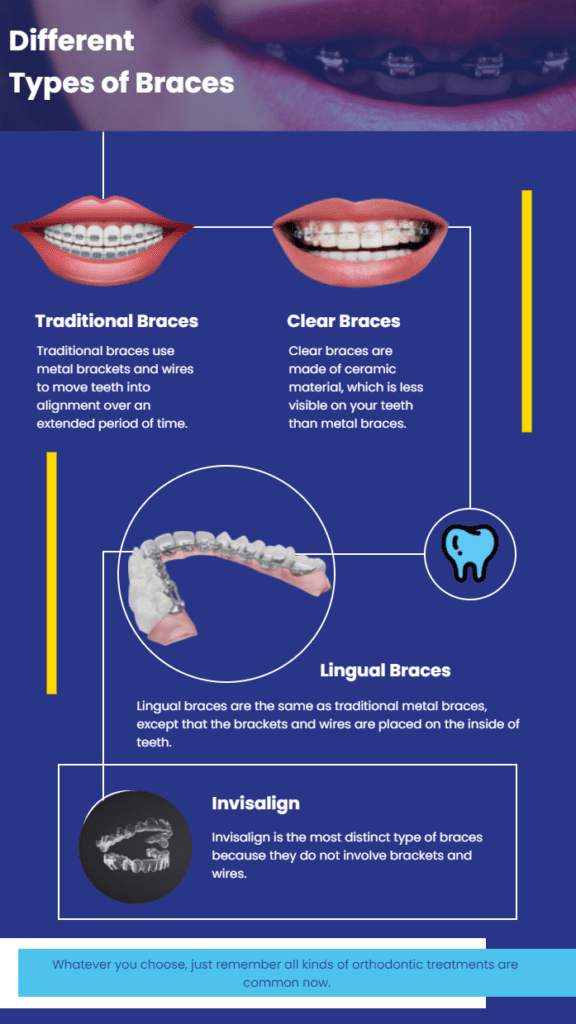Choosing the most effective Cumming Orthodontics for Effective Braces and Aligners Solutions
Choosing the most effective Cumming Orthodontics for Effective Braces and Aligners Solutions
Blog Article
Comprehensive Guide to Orthodontics Procedures for Remedying Oral Imbalances
Comprehending the ins and outs of each procedure, including their mechanisms, advantages, and prospective disadvantages, is essential in making informed choices concerning one's orthodontic treatment. As we navigate via the detailed guide to orthodontic procedures for dealing with oral misalignments, the intricate information of each approach will unfold, losing light on the path towards a unified and functional dental placement.
Orthodontic Procedures Overview

In enhancement to clear aligners and traditional dental braces, orthodontists might also suggest various other interventions like headwear, palatal expanders, or retainers to address certain placement issues (invisalign). These treatments are tailored to each individual's one-of-a-kind needs and may include a mix of treatments to achieve the preferred outcomes. Normal adjustments and monitoring are vital components of orthodontic treatment to guarantee development gets on track and to make any kind of necessary modifications along the method. By undertaking orthodontic treatments, patients can not only accomplish a straighter smile however likewise enhance their total oral health and wellness and function.
Conventional Braces: How They Work
When considering orthodontic treatments for oral misalignments, traditional dental braces stand apart as a reliable technique for correcting teeth positioning. Typical braces include brackets, cords, and bands that interact to apply continual pressure on the teeth, slowly relocating them into the wanted alignment. The braces are attached to the teeth making use of a special adhesive, and the cables are threaded through the brackets. By readjusting the tension of the cables, orthodontists can control the direction and pressure applied to each tooth, leading them right into appropriate placement over time.
One key element of exactly how typical dental braces work is the process of bone improvement. As stress is related to the teeth through the braces, the bone bordering the teeth is improved to sustain the brand-new tooth placements. This renovation is necessary for the lasting security of the corrected alignment. Clients will certainly need routine changes at the orthodontist's workplace to guarantee the braces continue to apply the right stress for efficient teeth motion.
Unnoticeable Aligners: Advantages And Disadvantages
Invisible aligners offer a hassle-free and very discreet choice to typical dental braces for dealing with oral imbalances. These clear, personalized trays are basically invisible when put on, making them an enticing alternative for people seeking a more aesthetically pleasing orthodontic therapy. Among the main advantages of invisible aligners is their removability, permitting easier upkeep of dental health contrasted to traditional dental braces. People can get rid of the aligners before consuming or cleaning their teeth, minimizing the threat of food getting embeded the device and simplifying the cleansing process.

Surgical Orthodontic Options
Surgical interventions in orthodontics existing viable options for addressing complex dental misalignments that might not be properly resolved teeth dentist with conventional orthodontic treatments. While unseen aligners and standard dental braces can fix numerous orthodontic issues, particular situations need surgical treatment to attain ideal results. Surgical orthodontic alternatives are commonly suggested for serious malocclusions, significant jaw discrepancies, and instances where the underlying bone structure requires alteration to accomplish proper placement.
One typical surgical orthodontic treatment is orthognathic surgical treatment, which involves rearranging the jaws to fix useful problems such as difficulty speaking or eating. This surgery is usually done in collaboration with an orthodontist that assists straighten the teeth before and after the treatment. Surgical orthodontics may additionally include treatments to expose influenced teeth, remove excess periodontal cells, or improve the jawbone to create a more harmonious face account.
Prior to thinking about medical orthodontic choices, people undergo a comprehensive examination to determine the requirement and possible benefits of such interventions. cumming braces. While surgery may appear difficult, it can significantly click for info enhance both the feature and visual appeals of the smile in situations where standard orthodontic therapies fall short
Retainers and Post-Treatment Care

Post-treatment care entails complying with the orthodontist's directions faithfully. This might consist of proper oral hygiene practices, attending follow-up appointments, and wearing the retainers as recommended. Failure to adhere to post-treatment care directions can lead to relapse, where the teeth slowly move back towards their original positions. Consistent retainer wear, good oral health, and normal oral exams are crucial for keeping the outcomes attained with orthodontic surgical treatment and making sure the here are the findings long-lasting stability of the fixed dental alignment.
Verdict
Finally, orthodontic procedures offer numerous choices for correcting dental misalignments. Standard braces make use of steel braces and cables to move teeth right into proper alignment. Unnoticeable aligners give a more very discreet option yet might not appropriate for all cases. Surgical orthodontic alternatives are available for a lot more extreme misalignments. Retainers are frequently utilized post-treatment to preserve the brand-new positioning. Overall, orthodontic treatments can efficiently improve dental wellness and aesthetic look.
As we browse via the extensive overview to orthodontic treatments for remedying oral misalignments, the complex information of each method will unravel, shedding light on the path towards a unified and practical dental alignment. - invisalign
One of the most common orthodontic therapies is the use of dental braces, which are composed of steel brackets and cables that apply mild stress to progressively change teeth into the desired placement.When taking into consideration orthodontic therapies for oral misalignments, typical dental braces stand out as a tried and true method for dealing with teeth positioning. In addition, unnoticeable aligners may not be ideal for intricate orthodontic concerns that need more substantial teeth activity, as they are normally advised for light to modest instances. Retainers are personalized orthodontic devices created to hold teeth in their remedied positions after the conclusion of orthodontic therapy.
Report this page